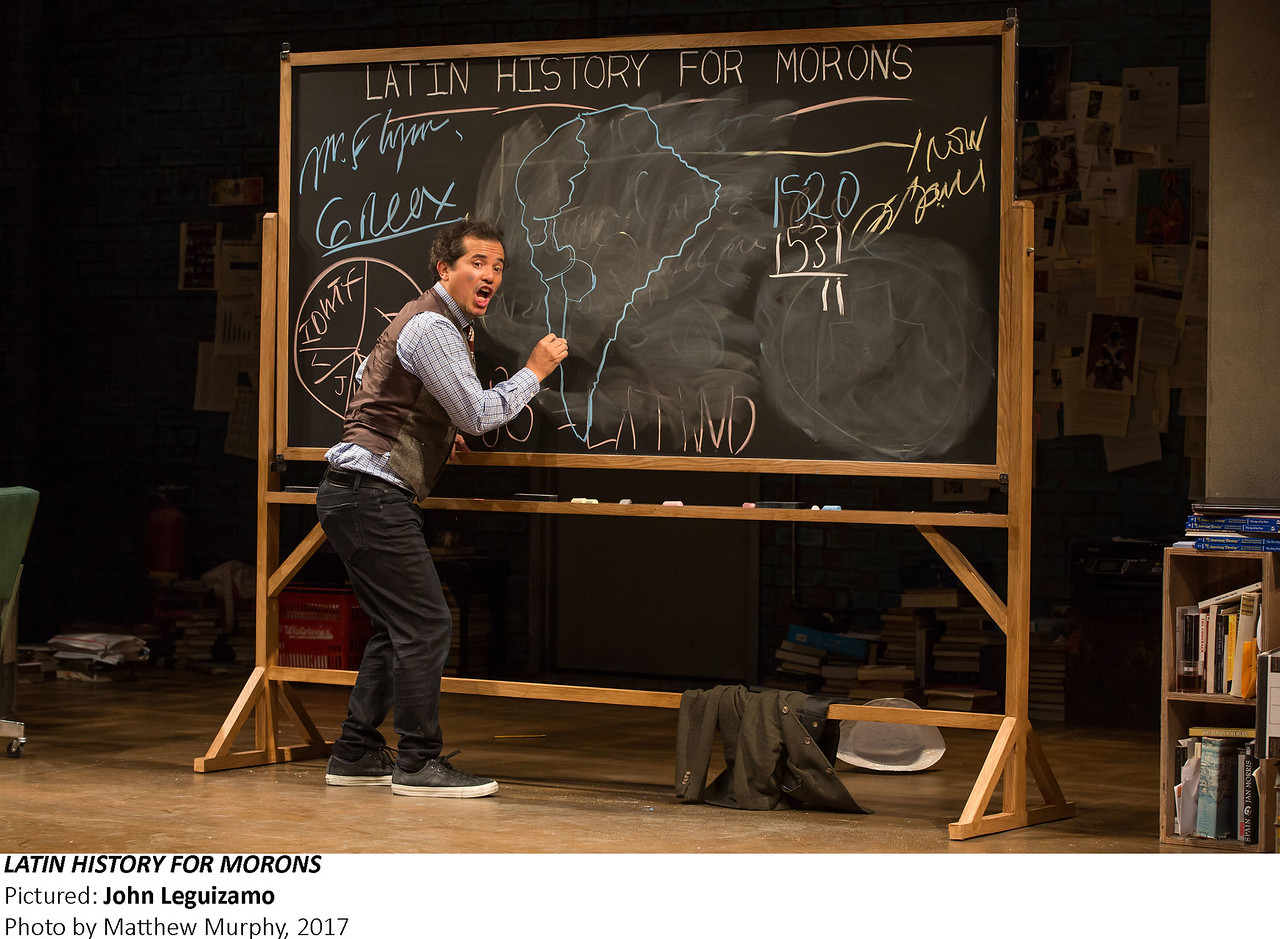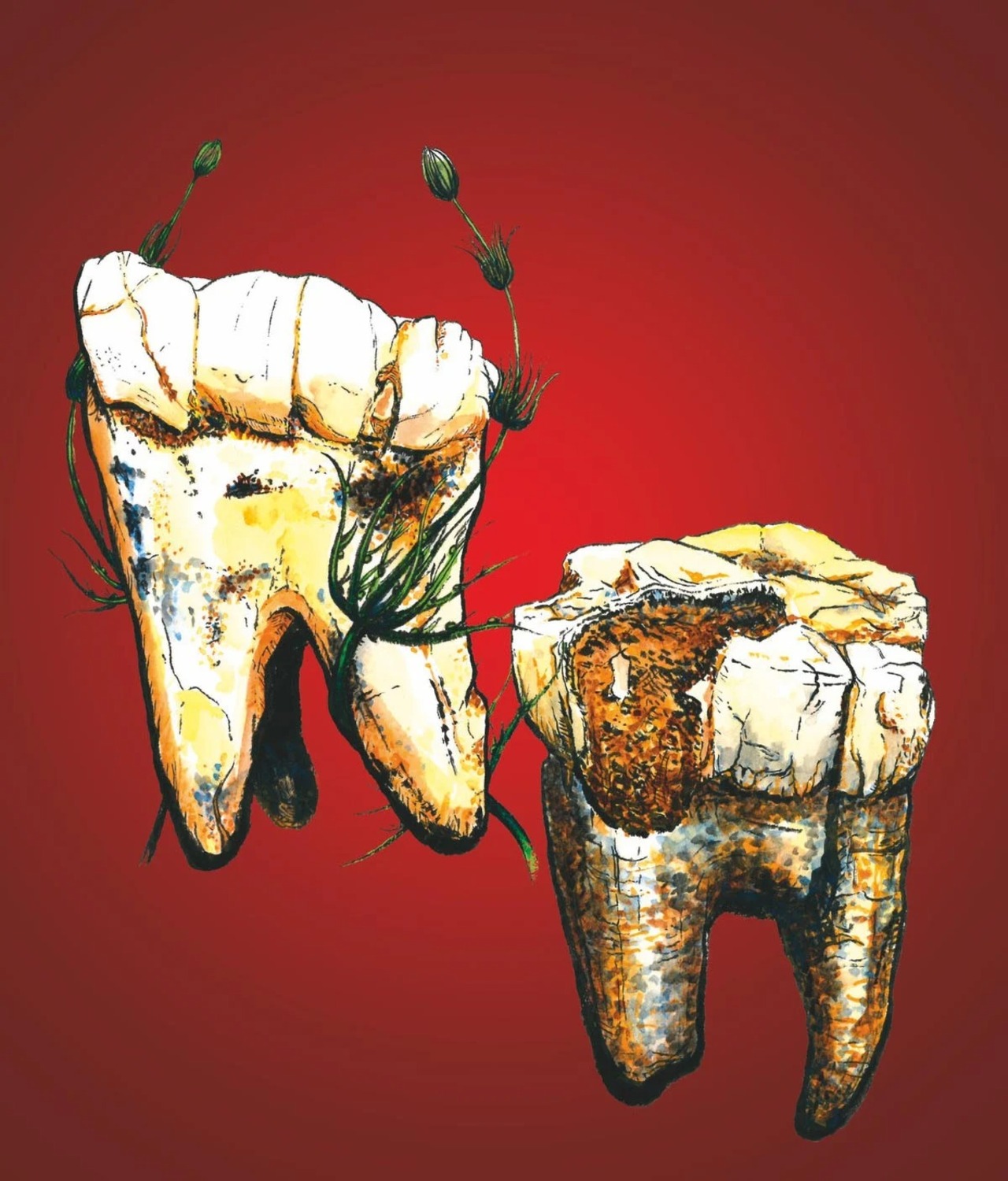
'Latin History for Morons' illustrates forgotten history
On July 19, John Leguizamo performed his Tony award-winning, one-man show, “Latin History for Morons,” at the Merriam Theater in Philadelphia.
The theater goes dark as a figure appears on stage. The spotlight shines on him as he walks towards the middle of the stage carrying a briefcase. The audience’s applause fills the theater as John Leguizamo faces the crowd- You can feel the eagerness and excitement: tonight’s history lesson is about to begin.
The stage of “Latin History for Morons” is set like a classroom: on the left there is a desk with books, and on the right, there is another stack of books. In the center is the chalkboard that Leguizamo uses to illustrate his lesson — which Leguizamo playfully advised the audience to pay attention as they would be quizzed later.
This thought-provoking show starts with a jump to the past.
Leguizamo recalls the way his son was bullied in middle school because of his race, and the struggle that his son had with picking a hero to write about for a school assignment. In the face of his son’s challenges, Leguizamo sets off on a journey to find Latin heroes that his son can write about and use as examples to draw on in order to stick up to his bullies.
With this, we start our second jump to the past, this time to 1980s New York. Leguizamo explains how his teacher always taught about the contributions made by every race except Latinos. Instead of learning about his history through school, he learned through his uncle.
Leguizamo does a good job of mixing a history lesson with comedy. He keeps the audience entertained by getting into different characters which includes a king, a conquistador, and a founding father, to name a few. Leguizamo’s acting skills are on display, as he gives each historical figure their own personality, either by changing his tone of voice, the way he walks or even by altering his costume on the spot. He transforms into a founding father by using the chalkboard eraser to color his hair white and adopting a high-pitched voice to convey Montezuma.
Throughout the show in Philadelphia, the jokes were non-stop, and the laughter that erupted from the audience was contagious. The woman in front of me kept exclaiming “Oh my God!”. You couldn’t help but feel the positivity in the room.
RELATED CONTENT
Although not everything was joyful. Leguizamo explains the great achievements of an ancient civilization, even though ultimately they were destroyed. When he would concludes their story, the audience was silent— you could feel the sadness.
Leguizamo incorporates his own struggle to find his son a worthy hero; he acknowledges how he felt defeated once he learned that at the end the Latin heroes would have a depressing ending.
We take our last jump to the past at the end of the show, this time to New York on the day of his son’s graduation. Here, we see that Leguizamo’s efforts paid off: as his son explains in his speech the struggle he had with finding a hero, he ends with the uplifting words, “My hero is me.”
The show was very enjoyable. The many dance breaks- with excellent choreography were a pleasant surprise. The atmosphere of the theater was electric the audience was glued to Leguiazamo’s performance. My favorite line was when he said that he found his “ammunition” through books that exposed him to Latin history.
That night the “lovely morons,” as Leguizamo called the audience, discovered the information missing in school textbooks through a comedian’s one-man-show, and left the theater more confident and more educated.











LEAVE A COMMENT: